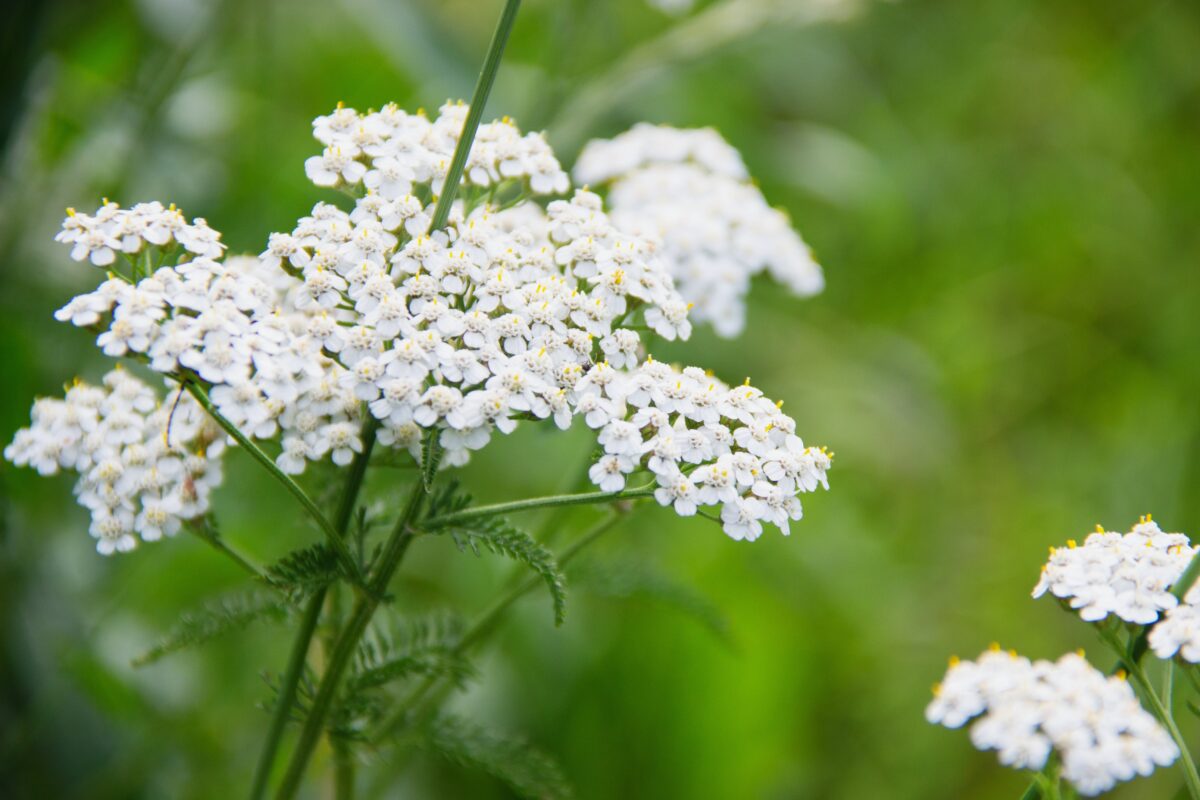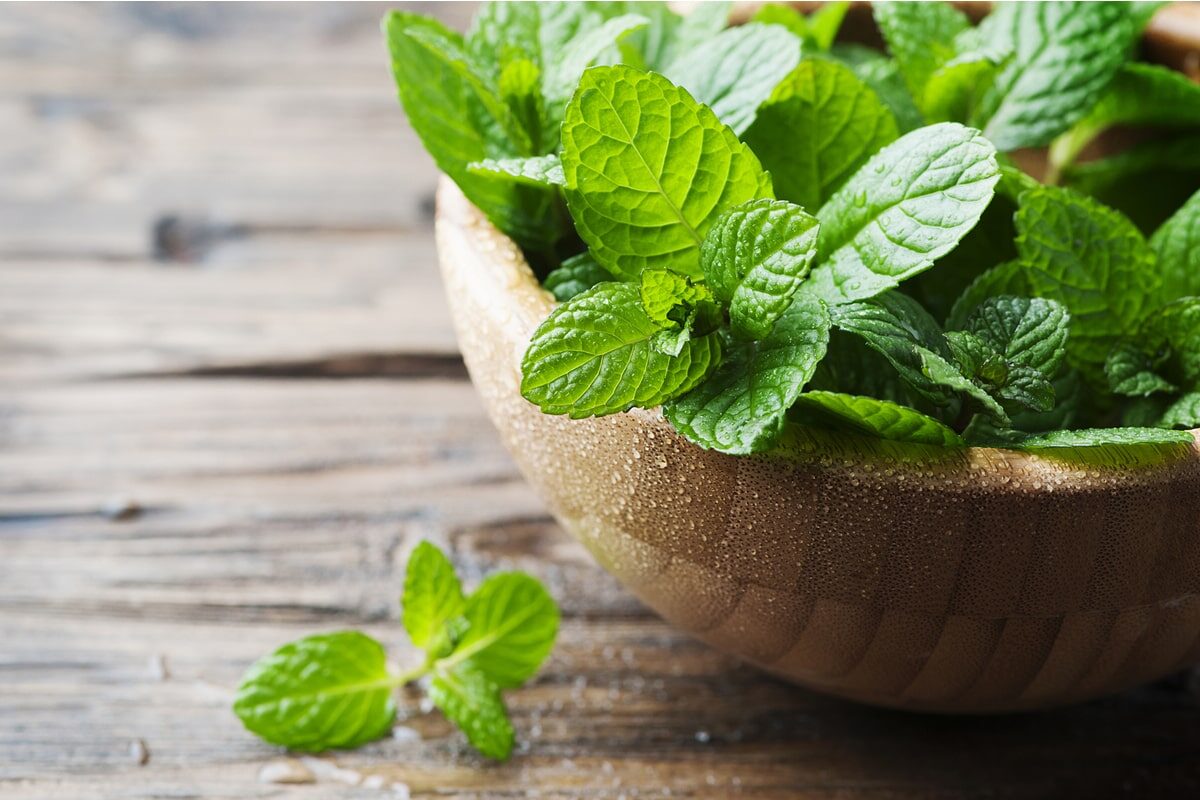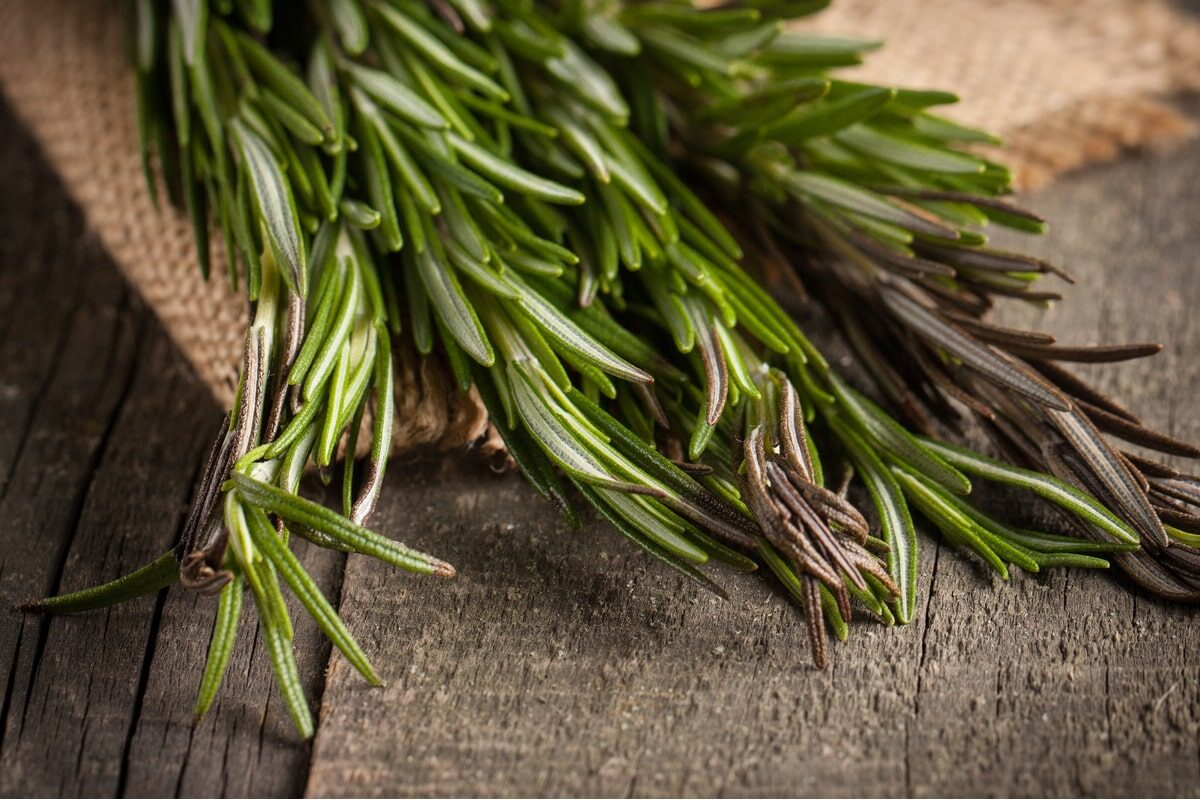


When we have a cold or feel unwell, we tend to visit a doctor or buy medicine from the pharmacy. However, some diseases can be cured with the help of the healing power of plants—specifically herbs—in natural remedies, without the worry of drug resistance. Furthermore, some herbs are well-suited for home growing.
Medicinal parts: Leaves and flowers
Uses: Stops bleeding, induces sweating and reduces fever, lowers blood pressure, and treats varicose veins
The Latin name for yarrow is Achillea millefolium, and the genus name Achillea is derived from the legendary Trojan War warrior, Achilles, who was said to have used yarrow to stop the bleeding of wounded soldiers.
Since ancient times, people have applied fresh or dried yarrow on wounds to help stop bleeding, promote healing, and treat ulcers. Modern research has also found that yarrow extracts have evident anti-inflammatory properties for the skin.
Erica Kuo, a registered herbalist in the United States, certified aromatherapist in the UK and the United States, and founder of the Rosemary Garden, said that yarrow is a commonly used medicinal herb for stopping bleeding in the wild, “but personally, I think that it is the best herb for reducing fever.” Unlike fever-reducing medications, which can cause chills, drinking yarrow tea during a fever can warm the body and induce sweating, leading to a reduction in fever. Since it heats the body, people who are prone to cold hands and feet in the winter can also benefit from drinking it.
Additionally, yarrow has vasodilating effects, which are anti-hypertensive and can be used to treat varicose veins.
“Yarrow is also very effective in stabilizing blood pressure. I grow it in my own home,” Kuo pointed out. “I think it is the easiest (herb) to grow.” Yarrow is a commonly found herb in the wild, growing in coastal areas as well as high-altitude regions. It is very resilient and easy to grow.
The most commonly found species of yarrow in the U.S. market is the one with white flowers. In recent years, yellow-flowered species have also been introduced from Europe. In addition to white and yellow flowers, there are also yarrow plants with orange and red flowers. The color of yarrow flowers may be influenced by the soil’s pH value.
Medicinal parts: Roots, leaves, and flowers; the whole plant has medicinal uses.
Uses: Boosts immunity, fights viral and bacterial infections, and helps reduce fever
Many people plant echinacea in their gardens for ornamental purposes, without realizing that every part of the plant has medicinal value.
Echinacea contains various phytochemical compounds, such as phenolic acids, polysaccharides, and alkamides. Among these, alkamides have immunomodulatory, anti-thrombotic, anti-microbial, antiviral, anti-inflammatory, antioxidant, analgesic, anti-diabetic, and anti-cancer activities.
In terms of immunomodulation, echinacea can modulate both innate and adaptive immune responses. Regular consumption of echinacea may slightly reduce the chances of catching a cold. Drinking echinacea tea at the early onset of cold or flu symptoms may alleviate these symptoms in a shorter period. A clinical trial found that drinking hot echinacea tea during the early stages of influenza was found to be just as effective as the antiviral drug oseltamivir, and had a reduced risk of complications and adverse events.
Another study found that taking echinacea tablets during a cold can shorten the illness’s duration in children, with 90 percent of colds completely resolved after 10 days.
“Many people do not know how useful echinacea is,” Kuo said. “Both yarrow and echinacea are important components of my tea recipes.” Both the leaves and roots offer beneficial properties, but the roots are the best in terms of efficacy, especially echinacea roots that have been planted for at least two years.
Echinacea roots can be used to make tinctures, which offer the additional benefits of easy storage and year-round availability. Alcohol is a better extractant due to the poor water solubility of alkamides.
When taking echinacea to reduce fever, it is best to add some cooling peppermint, especially when the throat is inflamed, as it can improve its effectiveness.
Kuo mentioned that echinacea is typically planted in Taiwan during October and harvested in March or April of the following year, while in the United States, it is better to plant it in spring and harvest it in summer.
Medicinal parts: Leaves
Uses: Relieves stomach pain, bloating, nausea, and vomiting
Peppermint is commonly used to improve gastrointestinal conditions. For example, if you experience bloating after eating gas-producing foods, drinking peppermint tea can usually induce burping and flatulence within half an hour.
One study showed that peppermint can be used to improve irritable bowel syndrome, functional dyspepsia, and childhood functional abdominal pain. It also has antibacterial and anti-inflammatory properties, as well as the ability to enhance attention.
Kuo noted that there are over 20 different varieties of peppermint available on the market today, including pineapple peppermint, chocolate peppermint, and licorice peppermint. These newly developed varieties of mint, primarily used as garnishes for cocktails or juices, may not have the same efficacy as traditional peppermint and spearmint, which have more research supporting their effectiveness.
Medicinal parts: Leaves and twigs
Uses: Promotes fat metabolism, stimulates blood circulation, and boosts brain function
Rosemary is added to some meat dishes, which not only enhances the aroma and removes gaminess, but also helps promote fat metabolism in the body.
Research has shown that rosemary can inhibit lipid absorption and regulate lipid and glucose metabolism, leading to a reduction in cholesterol and blood glucose levels. This can help lower the risk of obesity and metabolic syndrome.
People who often experience indigestion or have upset stomachs after eating meat can try adding rosemary when cooking beef, pork, chicken, or other meats, or drink a cup of rosemary tea after meals.
Kuo suggests that individuals with gallstones or cholecystitis marinate meat dishes with rosemary to promote fat metabolism in the body. It is recommended to pair it with tea made from dandelion leaves or roots, which can help improve gallbladder function, as dandelion can also aid in fat metabolism and support the functions of the gallbladder and pancreas. People who have poor fat metabolism are more prone to pancreatic cancer and gallbladder cancer, she added.
Rosemary contains different classes of polyphenols, which possess antioxidant, anti-cancer, and anti-diabetic properties. Additionally, it can also help treat inflammation, relieve pain, boost memory, reduce anxiety, and tranquilize (calm) the mind.
Kuo added that rosemary contains eucalyptol, which is beneficial for cognitive function. People with poor cognitive function or memory decline may also benefit from consuming rosemary.
Medicinal parts: Leaves
Uses: Boosts immunity, has antibacterial and anti-inflammatory effects, and prevents parasitic infections
The aromatic Origanum vulgare, known better as oregano, is commonly used in Italian cuisine. It is a prolific herb that possesses the characteristics of a wild plant, readily flowering and producing seeds.
Carvacrol, a compound found in oregano, is a potent antioxidant that can effectively combat pathogens, including bacteria and fungi like Escherichia coli, Staphylococcus aureus, and Aspergillus flavus. An experiment found that the essential oil of Origanum vulgare can inhibit strains of multiresistant bacteria, even at lower concentrations.
Kuo noted that carvacrol has the strongest antibacterial properties among all the essential oil components extracted from herbs, and oregano has the highest concentration of carvacrol.
Interestingly, the concentration of carvacrol in oregano actually increases after it is dried. Kuo recommends adding dried oregano to dishes instead of brewing it as tea, as its flavor is too pungent and spicy. She even suggests adding some dried oregano leaves to the food of pets like cats or dogs to prevent them from getting parasites.
Simply using one to two leaves of these herbs is not enough to fully utilize their therapeutic benefits; a certain amount is needed.
Effective ratio: For a 250 ml cup of tea, use 3 tablespoons of fresh leaves or 1 tablespoon of dried leaves.
If echinacea roots are used, the amount can be reduced to 1 to 2 teaspoons.
Kuo, who has been advocating for self-care and healing using herbs and essential oils for many years, said that herbs are less likely to cause drug resistance. She explained that the environment, temperature, humidity, soil, sunlight, and other factors in which plants grow can affect the ratio of their chemical structures, such as that of carvacrol. Since the ratio is not consistent every time, bacteria and viruses are less likely to develop resistance.
However, the key is to use high-quality, organic, or locally grown herbs. It is recommended to understand whether the extraction methods of essential oils meet the standards, as well as the planting conditions of the plants. Growing your own herbs can naturally ensure safe use.
According to Kuo, many people struggle to grow these plants because of issues related to water. For instance, herbs such as rosemary and oregano naturally thrive in limestone soil with excellent drainage. Therefore, when growing these plants in the United States, it is crucial to pay close attention to proper drainage and consider the local rainfall conditions.
Overwatering is a common reason for failure when growing herbs in Taiwan, as it can lead to rotting and death of the plants. It is important not to overwater herbs recently purchased from a flower market. Adding vermiculite or perlite to the soil can help adjust soil texture, improving drainage, water retention, and air permeability.





